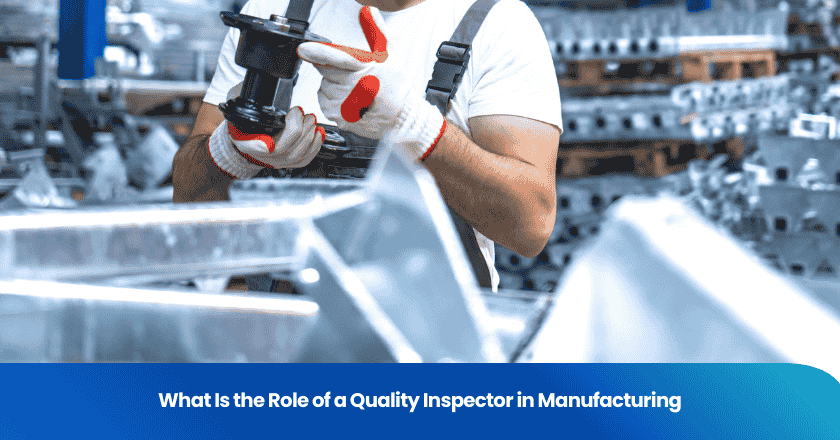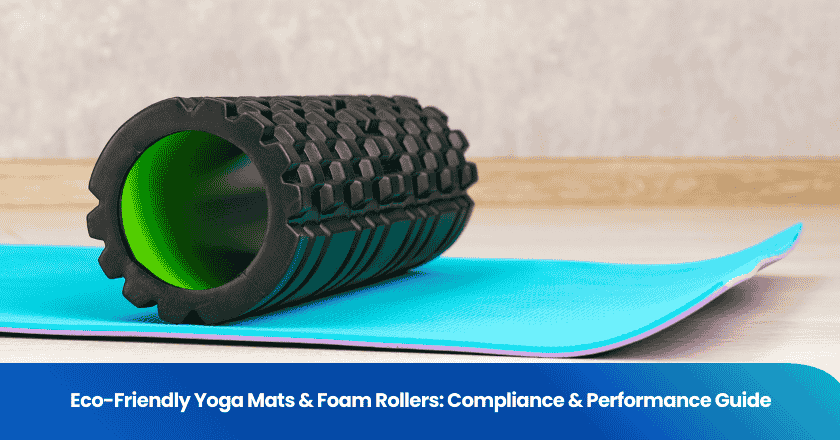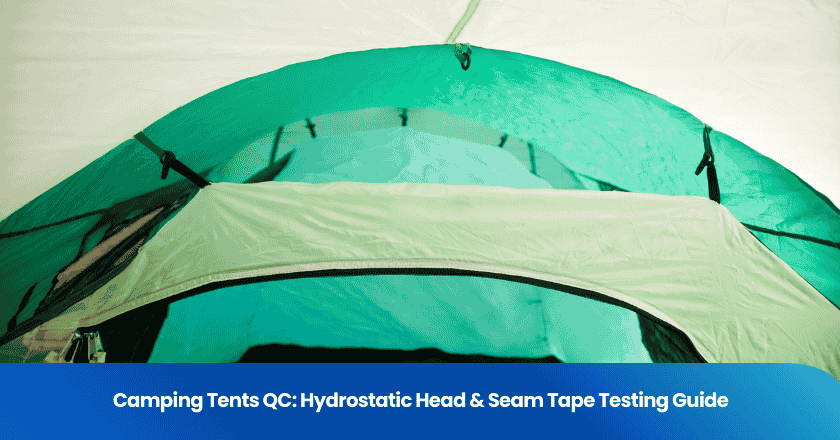
When you ask what does quality inspector do in manufacturing, you find that their main role is to check products at every stage to ensure they meet strict standards. You rely on these inspectors to catch defects early, which helps prevent problems before products reach customers.
- They examine raw materials and finished goods, making sure each item meets quality requirements.
- By catching issues early, they reduce waste and lower the risk of costly recalls.
You can trust that quality inspectors protect both product safety and your company's reputation.
Key Takeaways
- Quality inspectors check products at every stage of manufacturing to ensure they meet strict standards.
- They help catch defects early, which reduces waste and prevents costly recalls.
- Quality control inspectors focus on the product, while quality assurance inspectors focus on the processes that create the product.
- Using precise tools and techniques, inspectors verify that materials and products conform to specifications.
- Regular inspections and documentation help maintain product quality and support continuous improvement.
What Does Quality Inspector Do
When you step onto a manufacturing floor, you might wonder, what does quality inspector do? You see these professionals at work, ensuring every product meets strict standards before it reaches customers. Their responsibilities go beyond simple checks. You rely on them to monitor every stage of production, from raw materials to finished goods. They use a combination of visual inspections, lab tests, sampling, and process audits to maintain high quality.
Quality Control Inspector Tasks
As a quality control inspector, you focus on the product itself. Your main goal is to detect and correct defects before products leave the facility. You inspect and measure materials and products for conformance to specifications. You use standard measuring tools like rulers and calipers to verify dimensions, color, texture, and strength. You interpret blueprints and data to determine the right inspection procedures. You record inspection data and notify supervisors of any quality issues you find.
- You inspect and measure materials and products for conformance to specifications.
- You use standard measuring tools like rulers and calipers accurately.
- You interpret blueprints and data to determine inspection procedures.
- You record inspection data and notify supervisors of quality issues.
You conduct inspections at key stages of production. Sometimes, you perform checks after process changes or tool adjustments. You might also inspect products at predefined intervals or after a certain number of units.
The table below shows how often you might perform these inspections:
| Inspection Type | Frequency Description |
|---|---|
| Key Stages of Production | Inspections occur at critical points during production. |
| After Process Changes or Tool Adjustments | Inspections are conducted immediately after any process changes. |
| Predefined Intervals or Batch Counts | Inspections may happen every 50 units or hourly, depending on the product. |
You play a crucial role in maintaining product quality. You help prevent defective products from reaching customers, which protects your company's reputation and reduces waste.
Quality Assurance Inspector Duties
As a quality assurance inspector, you take a broader view. You focus on the processes that create products, not just the products themselves. Your job is to prevent defects by making sure every step in the manufacturing process follows established procedures. You work proactively, often before production even begins.
Note: While a quality control inspector checks the finished product, a quality assurance inspector ensures the process itself is effective and efficient.
The table below highlights the key differences between these two roles:
| Feature | Quality Assurance (QA) | Quality Control (QC) |
|---|---|---|
| Primary Focus | Process-oriented: Prevent defects | Product-oriented: Detect and correct defects |
| Purpose | Ensure processes are effective and efficient | Verify finished product meets standards |
| Timing | Proactive: Before production or delivery | Reactive: After production or during final stages |
| Responsibility | Management, Process Designers, Quality Teams | Inspection Teams, Testers, Quality Inspectors |
| Activities | Audits, process documentation, training, SOP creation | Product inspections, testing, sampling, defect fixing |
| Goal | Build quality into the process | Catch defects in products before delivery |
| Tools Used | Process flowcharts, audit checklists, CAPA systems | Inspection checklists, SPC charts, testing equipment |
You implement several quality assurance processes to maintain high standards:
1. You establish quality control measures, such as tests and inspections, to ensure products meet specified standards.
2. You drive continuous improvement strategies, refining processes to enhance quality and efficiency.
3. You use statistical process control (SPC) to monitor and control production by tracking data points and identifying variations.
4. You manage quality management software (QMS) to automate audits and track compliance.
5. You create feedback loops, collecting and analyzing data to refine processes and improve customer satisfaction.
You ensure that every process step supports product quality. You train teams, document procedures, and audit processes regularly. Your work builds a culture of quality throughout the organization.
When you ask, what does quality inspector do, you see that both quality control inspector and quality assurance inspector play vital roles. You depend on their expertise to maintain high standards, prevent defects, and deliver safe, reliable products to customers.
Key Responsibilities
Inspections and Testing
You take on a range of responsibilities as a quality control inspector or quality assurance inspector. Your main task is to perform inspections and testing at different stages of production. You check raw materials before manufacturing begins, monitor products during production, and conduct final inspections before shipment. You use tools like calipers and gauges to measure dimensions and verify specifications. You also supervise container loading and unloading to ensure safe handling.
You perform visual, dimensional, and functional inspections. You also use laboratory tests to check for harmful chemicals and verify compliance with safety regulations. For example, you may test toys for lead content or office chairs for durability.
Reporting and Documentation
You document every inspection thoroughly. Your reports include the date, your name, the location, and the purpose of the inspection. You use detailed checklists to record findings and observations. You attach photos as evidence and rate the severity of any issues. You recommend corrective actions and sign off on the report.
You track non-conformities and link them to corrective actions. You maintain a documentation trail for regulatory compliance and audits.
Maintaining Quality Systems
You help maintain the quality management system. You follow company policies and objectives for quality improvement. You use standard procedures for every task to ensure consistency. You keep records of all inspections and changes. You train new employees on quality control procedures. You collect feedback and suggest improvements. You schedule regular audits and reviews to make sure everyone follows procedures.
You play a key role in ensuring compliance with industry standards and safety regulations. You identify critical points in production, perform quality checks, and document deviations. You help resolve issues quickly and prevent future problems. Your work as a quality control inspector or quality assurance inspector protects product quality and supports continuous improvement.
Daily Activities
On the Manufacturing Floor
You start your day by preparing inspection tools and reviewing the production schedule. You perform maintenance on coordinate measuring machines (CMM), including calibration, to guarantee accurate results. You measure product dimensions using rulers, calipers, and gauges, verifying that each item meets company specifications. You monitor fabrication activities, keeping a close watch on adherence to quality standards and API requirements. You also conduct fluorescent inspection on small turbine components, ensuring no defects escape your attention to detail. Regular inspection routines help you catch issues early, preventing recurring problems that can lead to costly corrections.
- Perform maintenance and calibration on CMM.
- Measure product dimensions with precision instruments.
- Monitor fabrication for compliance with standards.
- Conduct fluorescent inspection on critical components.
Your attention to detail ensures that every product meets strict quality requirements before moving to the next stage.
Interacting with Teams
You collaborate with production teams throughout the day. You share inspection results and provide feedback, helping teams adjust processes to maintain quality. You use inspection management software to promote accountability and clarify responsibilities.
Your interactions often involve different types of inspection, as shown below:
| Type of Inspection | Description |
|---|---|
| Pre-production Inspection | Conducted before production starts to ensure materials and processes meet quality standards. |
| During Production Inspection | Inspections carried out while production is ongoing to identify deviations early and maintain quality. |
| Pre-shipment Inspection | Ensures that products meet quality standards before they are shipped to customers. |
| Container Loading/Unloading | Inspections during loading/unloading to verify that products are handled correctly and remain undamaged. |
You communicate findings clearly to both production teams and management. You explain how quality issues can affect production time, costs, and customer satisfaction. Constructive feedback fosters a team environment focused on continuous improvement.
Addressing Issues
You address quality issues quickly and efficiently. You follow a structured process to resolve problems:
1. Identify the defect using inspection data.
2. Notify relevant personnel and document the issue.
3. Decide whether to shut down the line or quarantine defective parts.
4. Implement checklists and data analytics to track quality metrics.
5. Audit processes to find weak points and ensure compliance.
6. Calibrate tools and enforce supplier quality control.
7. Use root cause analysis and corrective actions to prevent recurrence.
Your attention to detail and proactive approach help prevent recurring quality problems, which can account for a significant portion of defect-related costs. Regular and thorough inspection routines allow you to identify issues early, reducing the risk of subpar products reaching the market and supporting a culture of quality throughout the facility.
Skills and Qualifications
Technical Skills
You need strong technical skills to excel as a quality inspector in manufacturing. Technology enhances your ability to maintain high quality standards. Being technologically literate helps you work efficiently and adapt to new tools. You use measuring instruments like calipers, gauges, and micrometers to check product conformance. You operate laboratory equipment to analyze materials and ensure compliance with quality standards. Automated equipment such as coordinate measuring machines (CMM) and Smart Scope systems improve your inspection accuracy.
You also need to understand advanced counting devices and specialized software for tracking product quality. Familiarity with automated weighing machines and precise measuring instruments makes your inspections more reliable. Embracing technological advancements, such as AI-powered tools, reduces human error and supports thorough quality checks.
Tip: Regular practice with inspection tools increases your speed and accuracy, which is critical for maintaining consistent quality.
Certifications
Certifications validate your expertise and commitment to quality. You can pursue industry-recognized certifications to improve your effectiveness and job prospects. These credentials demonstrate your competence and give you a competitive edge in the job market.
| Certification Name | Description |
|---|---|
| Certified Manager of Quality/Organizational Excellence | Prepares you to oversee large-scale quality systems. |
| Six Sigma Green Belt | Focuses on process improvement for small projects. |
| Six Sigma Black Belt | Equips you to lead major process improvement initiatives. |
| Certified Quality Auditor | Demonstrates your auditing skills for compliance. |
| Certified Quality Engineer | Emphasizes technical expertise in statistical control and reliability. |
| Certified Quality Improvement Associate | Serves as a starting point for newcomers to quality roles. |
Obtaining certifications, such as the Certified Quality Inspector from the American Society for Quality, can enhance your promotion chances and provide a foundation for career growth.
Personal Qualities
Your personal qualities play a vital role in your success as a quality inspector. Attention to detail helps you identify defects and maintain high quality standards. Analytical skills allow you to evaluate processes and make informed decisions. Problem-solving abilities enable you to address challenges in a dynamic production environment.
- Attention to detail ensures all outputs meet company quality standards.
- Analytical skills help you assess and improve manufacturing processes.
- Problem-solving abilities support you in overcoming production challenges.
- Communication skills facilitate clear reporting and teamwork.
- Time management allows you to handle multiple tasks efficiently.
- Commitment to learning keeps you updated with evolving quality practices.
Note: Effective communication ensures your findings are understood and acted upon, which is essential for maintaining quality throughout the manufacturing process.
Tools and Techniques
Inspection Equipment
You rely on a range of inspection equipment to maintain high quality standards in manufacturing. As a quality control inspector, you use precise tools to measure and verify product specifications. You check dimensions, surface finish, and material properties.
The following table highlights the most frequently used equipment:
| Equipment Type | Description |
|---|---|
| Calipers | Measure inside and outside diameters of components. |
| Gauges | Quick, reliable dimensional checks. |
| Hardness Testers | Determine the Rockwell Hardness of materials. |
| Indicators | Align parts, inspect roundness, or assess surface irregularities. |
| Micrometers | Measure thickness, depth, and length with high precision. |
| Surface Comparators | Visually compare and measure surface roughness or finish. |
| Surface Plates | Provide a flat reference surface for checking object flatness. |
You also use advanced inspection systems. AI visual inspection systems analyze images with high accuracy. These systems identify defects invisible to the human eye, improving the reliability of your quality assessments. Automated visual inspection increases operational efficiency and helps you streamline processes.
Tip: Automated inspection equipment offers unparalleled accuracy and consistency. You can detect defects quickly and maintain a competitive advantage in manufacturing.
Quality Control Methods
You apply several quality control methods to ensure products meet strict standards. As a quality assurance inspector, you focus on both process and product. You use visual inspections, statistical tools, and automated testing to maintain quality.
The table below summarizes the most effective methods:
| Method | Description |
|---|---|
| Inspection | Visually checks raw materials, in-process items, and finished products for defects and inconsistencies. |
| Statistical Process Control | Uses statistical tools to monitor and control processes, identifying variations and ensuring consistent quality. |
| Sampling | Involves testing a random sample of products to ensure they meet specifications without inspecting every item. |
| Automated Testing | Machines perform repetitive tests on products, ensuring consistency and accuracy while minimizing human error. |
| Employee Training | Regular training helps workers understand quality standards and identify defects early. |
You use statistical tools to analyze data and identify trends. These tools support informed decision-making and process improvements. Root cause analysis helps you address quality issues at their source, preventing recurring problems. As a quality assurance inspector, you train teams and document procedures to build a culture of quality throughout the organization.
Note: Consistent use of these methods allows you to deliver safe, reliable products and maintain compliance with industry standards.
You play a vital role in manufacturing by protecting product quality and safety. Your inspections, testing, and documentation ensure every item meets strict standards.
Your dedication supports reliable production and builds trust in every product. You deserve recognition for your commitment to excellence.
FAQ
What qualifications do you need to become a quality inspector?
You usually need a high school diploma or equivalent. Some employers prefer candidates with technical training or certifications in quality control. Strong math, communication, and problem-solving skills help you succeed in this role.
How do you handle a product that fails inspection?
You document the defect, notify your supervisor, and remove the product from the production line. You may quarantine the item for further analysis. Your actions help prevent defective products from reaching customers.
What tools do you use for inspections?
You use calipers, micrometers, gauges, and hardness testers. Automated systems and visual inspection equipment also help you check product quality. These tools ensure you measure and verify specifications accurately.
How do you ensure compliance with safety standards?
You follow strict inspection procedures and use checklists to verify compliance. You document your findings and report any issues immediately. Regular audits and training sessions help you stay updated on safety regulations.
Can you suggest ways to improve quality in manufacturing?
You can recommend regular training, update inspection procedures, and use data analysis to spot trends. Encourage open communication between teams. Continuous improvement helps you maintain high standards and reduce defects.
Grow your business with TradeAider Service
Click the button below to directly enter the TradeAider Service System. The simple steps from booking and payment to receiving reports are easy to operate.




